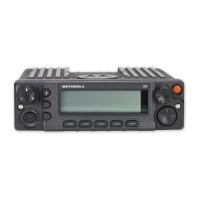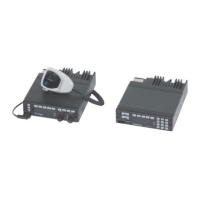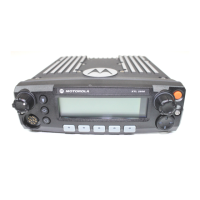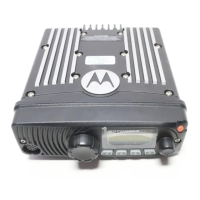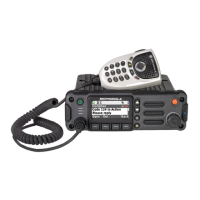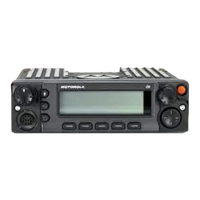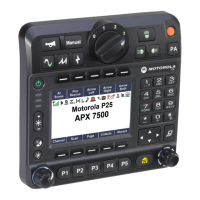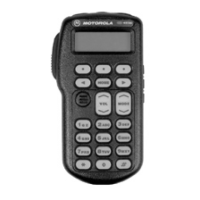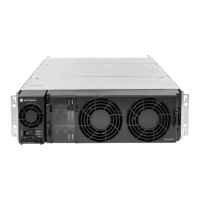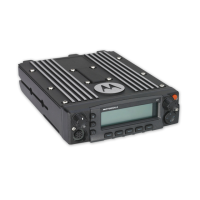Interconnect Boards Schematics, Component Location Diagrams, and Parts Lists: List of Interconnect Board Schematics and Component Location Diagrams 8-1
6881096C74-B May 25, 2005
Chapter 8 Interconnect Boards Schematics, Component Location Diagrams, and Parts Lists
8.1 List of Interconnect Board Schematics and Component Location Diagrams
The following table lists the remote interconnect boards schematics and component location diagrams
contained in this chapter.
Note: HLN6883A/B (Standard W4, W5, W7, and W9 control heads)
HLN6884A (Motorcycle W4, W5, and W7 control heads
HLN6885A/B (W3 control head only)
HLN6915B (W3 control head only)
HLN6902C (Standard W4, W5, W7, and W9 control heads)
HLN6901C (W3 control head only)
The motorcycle signal-routing diagram (Figure 8.6, on page 8-21) also is included in this chapter.
8.2 W3 Hand-Held Control Head (HHCH) Interconnect Board
The HLN6885 (W3 option) interface board has additional electronics to facilitate the power-control requirements
of the Hand-Held Control Head (HHCH). The circuit is based around a D-flop (U601), which remembers the
condition of the power switch. It controls a power MOSFET that switches power to SWB+ from the unswitched
A+ supply. Unlike the other control heads, shorting the MIC_HI_J5 to ground toggles the condition of power ON/
OFF. When the radio is On, the MIC_HI line is normally 9 V and, when the PTT is pressed, a typical microphone
will bias between 4 and 6 V, so the threshold on a comparator (U602-2) is set to about 2.5 V for the ON/OFF
condition. When the power is Off, bias is supplied by R609 through CR601 to allow the ON/OFF circuit to work.
The other half of CR601 is to block the normal microphone phantom power from loading this circuit down when
the radio is off.
Regulator U603 between the SWB+ line and J5-22 (SW_B+_REG_J5) keeps alternator whine from coupling
onto the MIC_HI line when supplying power to the control head during transmit.
An RC time constant resets the D-flop to a known condition of Off each time a power source is actively applied
to A+. Another comparator (U602-1) monitors the condition of a reset line on J5. J5-4 needs to be grounded for
the D-flop to be allowed to toggle to the On condition. This is normally accomplished when the HHCH is
connected to the J5 connector, either directly or through a remote "Y" cable.
Ignition sense is accomplished through Q606, which allows Q602 to be biased on when the IGN line is high.
This allows the radio to be turned off by the ignition switch of the vehicle without losing the memory of the last
ON/OFF condition, which is maintained by the D-flop and A+.
Another feature of the HHCH is POTT: Power-on-to-Transmit. If the D-flop is off, pressing the PTT button
causes the MIC_HI line to momentarily go low enough to turn the radio on. It is assumed that no one would
press the PTT unless they had the desire to transmit. This is useful if the operator has difficulty finding the On
button in an emergency. The way to defeat this option, to prevent unintentional power-On, is to add Q605, R613
and R614.
Another difference from the other control heads is that the HHCH does not have internal VIP transistors for
accessories, such as for horn and lights. This is facilitated by Q604 and Q603 on the interconnect board.
The final difference is protection from reverse current from SWB+ back to the A+ source by using a blocking
diode CR600. For this reason, devices connected to SWB+ can be as much as 0.8 V lower than the A+ supply
source.
Table 8-1. List of Interconnect Board Schematics and
Component Location Diagrams
Figure Title Page
Remote Interconnect Board Schematic (HLN6883A/B, HLN6884A,
HLN6885A/B) - for mid power
8-2
Remote Interconnect Board Component Location Diagram
(HLN6883A/B, HLN6884A, HLN6885A/B) - for mid power
8-3
Remote Interconnect Board Schematic ( HLN6915B) - for mid power 8-9
Remote Interconnect Board Component Location Diagram
(HLN6915B) - for mid power
8-10
Remote Interconnect Board Schematic (HLN6901C, HLN6902C) - for
high power
8-13
Remote Interconnect Board Component Location Diagram
(HLN6901C, HLN6902C) - for high power
8-14
Secure Interface Board Component Location Diagram—Side 1 8-20
Secure Interface Board Component Location Diagram—Side 2 8-20
Motorcycle Signal-Routing Diagram 8-21

